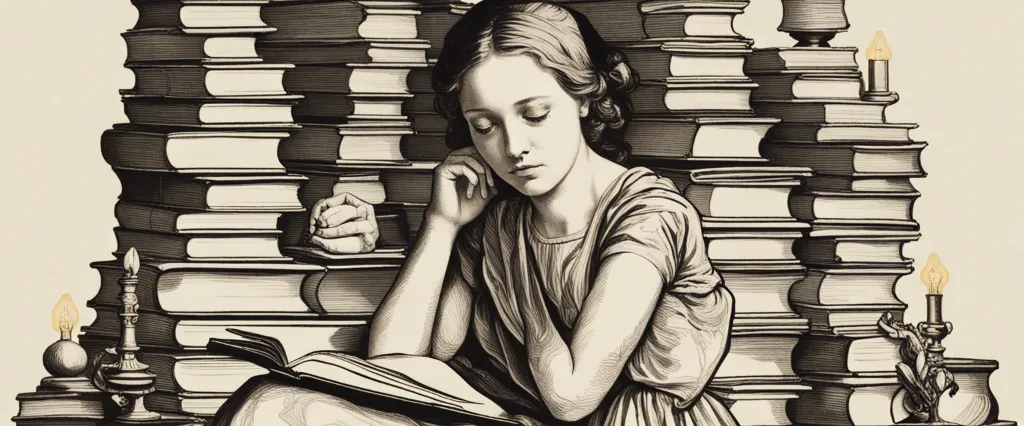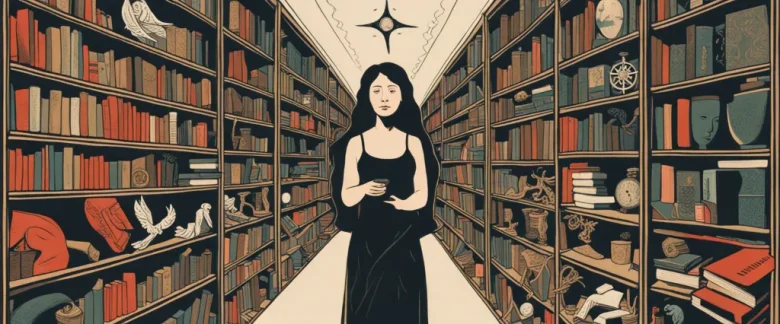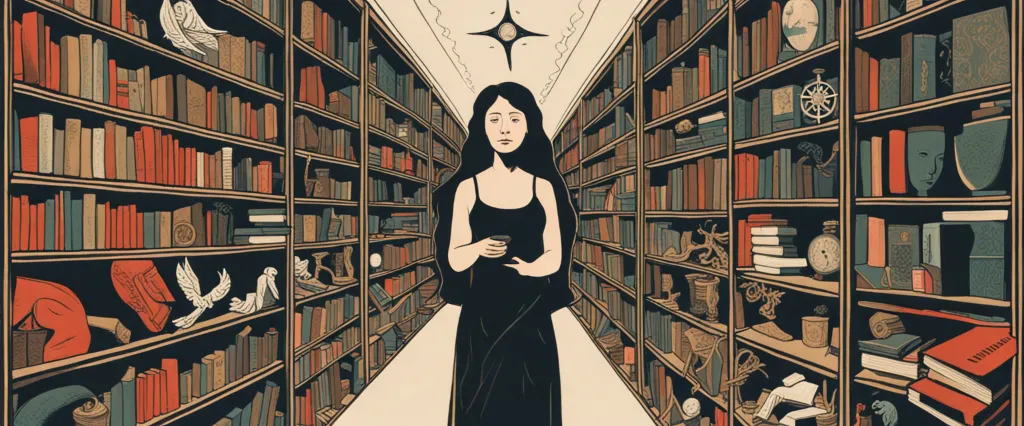In “The Canon,” renowned science journalist Natalie Angier takes readers on an exhilarating journey through the fundamental principles of scientific knowledge. Drawing from an array of disciplines, Angier explores the captivating wonders of physics, chemistry, biology, and more, unraveling complex ideas and presenting them in a relatable and digestible manner. As an accomplished author and Pulitzer Prize-winning journalist, Angier’s passion for science shines through in her writing, inviting both novices and experts alike to appreciate the beauty and significance of the scientific world.
Chapter 1: The Definition and Significance of Literature
Chapter 1 of “The Canon” by Natalie Angier dives into the definition and significance of literature. The author begins by examining the various ways literature can be defined, emphasizing that it is not limited to novels and poetry, but encompasses a wide range of written works. Angier argues that literature is a vehicle for human thought and emotion, enabling individuals to express and understand complex ideas and experiences.
The chapter highlights the significance of literature in shaping society and culture. It explores how literature has the power to challenge societal norms, inspire social change, and provide avenues for self-discovery. Literature acts as a mirror, reflecting the values, beliefs, and struggles of its time.
Angier emphasizes the artistic and aesthetic qualities of literature, emphasizing that it is not solely concerned with conveying information but also with stimulating imagination and provoking intellectual inquiry. She argues that literary works are masterpieces of language, crafted with precision and artistry to evoke specific emotions and sensations in the reader.
The chapter also touches upon the role of literature in preserving and transmitting knowledge across generations. Literature serves as a repository of human experience, recording history, culture, and wisdom. It allows us to connect with the past, empathize with different perspectives, and learn from the successes and failures of those who came before us.
Overall, Chapter 1 of “The Canon” provides a comprehensive overview of literature’s definition and significance. Angier highlights its ability to convey complex human experiences, challenge societal norms, evoke emotions, and preserve knowledge. By examining the multifaceted nature of literature, she sets the stage for further exploration of the works that have come to define the canon.
Chapter 2: The Classic Works of Literature
Chapter 2 of Natalie Angier’s book “The Canon” delves into the classic works of literature and their significance. Angier discusses the timeless masterpieces that have shaped the literary world and left a profound impact on society.
Angier begins by emphasizing that canonized literature represents a cultural memory, with certain works deemed essential for understanding and contemplating the human experience. She argues that these classics possess enduring value due to their ability to provoke empathy, challenge societal norms, and explore complex themes. Angier acknowledges that the concept of a canon has evolved over time and is a dynamic, ongoing conversation about which works deserve recognition.
She highlights classic authors like Jane Austen, Fyodor Dostoevsky, and William Shakespeare, emphasizing their ability to capture the essence of their respective eras while still resonating with modern audiences. These authors explored universal human feelings, motives, and conflicts, making their works relatable across generations. Angier also cites Herman Melville’s “Moby Dick” as an example of a work that initially received mixed reviews but gradually gained recognition for its profound examination of spiritual and existential questions.
Furthermore, Angier explores the feminist critique of the canon, which historically favored male authors. She discusses Virginia Woolf’s groundbreaking essay “A Room of One’s Own,” which argued for the inclusion of works by women writers. This critique paved the way for more equitable representation within the canon.
In summary, Chapter 2 of “The Canon” explores the enduring value of classic works of literature and their ability to transcend time and culture. Through a range of examples, Angier demonstrates how these masterpieces offer insight into the complexities of the human condition and continue to shape our understanding of ourselves and the world around us.
Chapter 3: The Diversity and Inclusivity of Literature
Chapter 3 of Natalie Angier’s book “The Canon” explores the diversity and inclusivity of literature. Angier argues that an important aspect of enriching our understanding of literature is recognizing and embracing the diverse perspectives it offers. She highlights various categories of literature that contribute to this diversity, such as literature by women, people of color, LGBTQ+ individuals, and writers from different countries and cultures.
Angier emphasizes the significance of female writers challenging societal norms and narratives that have historically marginalized and silenced women. She discusses how literature by women offers unique insights into female experiences, relationships, and societal issues that may be overlooked in male-dominated narratives. Additionally, Angier highlights the importance of literature by people of color in challenging stereotypes, exploring cultural identities, and shedding light on historical and contemporary injustices.
The chapter also explores LGBTQ+ literature, which Angier argues provides an essential platform for understanding the experiences, struggles, and joys of individuals within this community. She points out that by including LGBTQ+ voices, literature becomes more inclusive, educative, and relatable for diverse readers.
Moreover, Angier emphasizes the value of literature from different countries and cultures, which allows readers to expand their perspectives and gain insights into unfamiliar settings and traditions. By embracing such diverse literature, readers can broaden their understanding of humanity and foster empathy towards those with different backgrounds.
In conclusion, Chapter 3 highlights the importance of recognizing and appreciating the diversity and inclusivity of literature. Through various examples, Angier demonstrates how literature from different perspectives enriches our understanding of society, challenges stereotypes, and fosters empathy among readers.
Chapter 4: The Authority and Power of Literature

Chapter 4 of “The Canon” by Natalie Angier, titled “The Authority and Power of Literature,” explores the role and relevance of literature in today’s society. Angier emphasizes the immense influence and impact that literature holds, asserting that it shapes our thoughts, beliefs, and values.
Initially, Angier discusses the unique qualities of literature that distinguish it from other forms of communication and entertainment. She emphasizes that literature captures and exposes the complexities of the human experience, delving into the depths of emotions, relationships, and societal issues. By delving into the inner workings of characters and their motivations, literature provides readers with a window into the complexity of the human mind.
Angier then expands on the power of literature to affect societal change. She highlights the historical importance of literature in sparking revolutions and social movements, using examples from the civil rights movement and feminist literature. Literature has the ability to challenge societal norms, question authority, and encourage critical thinking. It serves as a medium for expressing and exploring diverse perspectives, thus fostering empathy and understanding among readers.
Furthermore, Angier emphasizes that literature transcends time and place, allowing readers to connect with people across different cultures and epochs. It grants readers access to different perspectives, expanding their understanding of the world. Literature also acts as a vehicle for exploring moral and ethical dilemmas, guiding readers towards introspection and personal growth.
In conclusion, Chapter 4 of “The Canon” highlights the authority and power of literature in shaping minds, sparking social change, and fostering empathy. By delving into the complexities of the human experience and presenting diverse perspectives, literature holds immense influence and provides a platform for critical thinking and personal growth.
Chapter 5: The Criteria for Judging Literature
Chapter 5 of “The Canon” by Natalie Angier, titled “The Criteria for Judging Literature,” delves into the challenges and complexities of analyzing and evaluating literature. Angier argues that there is no singular set of criteria to judge literature universally, as it is a deeply subjective and personal experience for each individual reader.
Angier begins by confronting the idea of objectivity when it comes to literary criticism. She discusses how literary critics often impose their own biases and preconceptions onto a work, interpreting it through their personal lens. Furthermore, she emphasizes that when judging literature, readers should keep an open mind and consider different perspectives and interpretations.
The chapter also explores various aspects that can be considered when evaluating literature. Angier suggests that the language used, writing style, character development, plot structure, and thematic depth are all significant elements. However, she warns against approaching these elements too rigidly, as they can vary greatly depending on the genre, author’s style, and cultural context.
Angier emphasizes the importance of empathy in understanding and appreciating literature. She explains that readers should attempt to identify with characters and their experiences, examining how a work elicits emotions and connections. She also discusses how literature can serve as a mirror for society, reflecting its values, conflicts, and social issues.
Ultimately, Angier concludes that the criteria for judging literature is highly individualistic. While certain conventions and standards may exist, the true value of a work lies in its ability to resonate with readers and evoke emotional responses. She encourages readers to trust their own interpretations and engage in discussions and debates about literature, as this diversity of perspectives enriches the experience of reading and understanding literary works.
Chapter 6: The Continuity and Transformation of Literature
Chapter 6 of “The Canon” by Natalie Angier explores the themes of continuity and transformation in literature. Angier argues that literature has evolved over time, embracing new ideas, perspectives, and forms while retaining certain universal human experiences.
The chapter begins by acknowledging that literature has always been shaped by the culture and society in which it emerges. Different periods and cultures have different literary styles and themes, reflecting the concerns and values of those times. From ancient myths and oral traditions to the advent of the printing press and the rise of the novel, literature has continuously adapted to new technologies and social contexts.
Angier delves into the concept of continuity in literature, highlighting the enduring themes that have resonated across time and cultures. These include love, death, loss, and the exploration of the human condition. Despite the diversity of literary works, certain emotions, questions, and moral dilemmas remain constant throughout history.
However, the chapter also emphasizes the transformative nature of literature. Angier argues that as society changes, so does literature. New voices and narratives emerge, challenging existing literary conventions and pushing the boundaries of what is considered “canon.” Literature has become more inclusive, featuring the voices and experiences of marginalized groups that were previously unheard.
The chapter further explores the impact of modern technology on literature, from the rise of digital and experimental writing to the democratization of storytelling through platforms like social media and blogs.
Overall, Chapter 6 of “The Canon” highlights the dynamic and evolving nature of literature. It recognizes the continuity of certain themes and experiences while celebrating the transformative power of new voices and ideas. Literature, as Angier suggests, continues to evolve and shape society, reflecting the multifaceted nature of human existence.
Chapter 7: The Social Impact of Literature
Chapter 7 of Natalie Angier’s book The Canon explores the social impact of literature throughout history. Angier argues that literature has the power to shape society’s values, beliefs, and behaviors, and that it plays a crucial role in shaping our collective consciousness.
The chapter begins with a discussion of how literature, both fiction and non-fiction, has been used as a tool for promoting social and political change. Angier highlights examples from different time periods, such as the role of literature in the abolitionist movement and how books like Uncle Tom’s Cabin contributed to changing public opinion on slavery.
The chapter then delves into the concept of literary empathy, with Angier arguing that literature has the ability to foster empathy and understanding towards different cultures, perspectives, and experiences. She explores how literature allows readers to step into the shoes of marginalized individuals, challenging prejudice and promoting tolerance.
Angier also explores the role of literature in challenging societal norms and conventions. She discusses how works like James Joyce’s Ulysses and Virginia Woolf’s Mrs. Dalloway broke literary and social barriers by portraying the interior lives and thoughts of their characters. These novels challenged the traditional narrative structure and gave voice to previously silenced perspectives, especially those of women.
The chapter also examines the ways in which literature can influence and shape language. Angier explains how authors like Shakespeare and Mark Twain have contributed to the evolution of language, introducing new words, phrases, and idioms into the English lexicon.
Overall, Chapter 7 of The Canon highlights the immense power of literature in driving social change, fostering empathy, challenging social norms, and influencing language. It serves as a reminder of literature’s profound impact on society and its ability to shape our understanding of the world.

Chapter 8: The Future and Development of Literature
Chapter 8 of Natalie Angier’s book “The Canon” explores the future and development of literature. Angier delves into the various ways literature has evolved over time and predicts what the future holds for this art form.
First, Angier acknowledges the impact of technology on literature. She discusses how the rise of digital platforms and e-books has broadened access to literature and allowed for self-publishing. However, she also recognizes concerns about the potential decline of traditional publishing and the quality of writing in this new digital era.
Furthermore, Angier highlights the ever-present themes in literature that she believes will continue to shape future works. She suggests that humanity’s intrinsic fascination with love, death, identity, and other existential dilemmas will persist, but the unique perspectives and experiences of diverse voices will bring fresh and exciting dimensions to these timeless topics.
Angier emphasizes the importance of narrative, suggesting that storytelling will always remain at the core of literature. Regardless of the medium or format in which stories are told, the power of a well-crafted narrative to transport readers and evoke emotions will continue to endure.
Angier also explores the potential impact of artificial intelligence (AI) on literature. She discusses how AI technology could be used to assist writers by gathering and analyzing vast amounts of information, helping them create richer, more informed narratives. However, she also raises ethical questions surrounding AI’s ability to produce genuinely original work and poses concerns about the potential loss of human creativity and imagination.
In conclusion, Angier predicts that literature will evolve but not become obsolete. Technologies such as digital platforms and AI will undoubtedly shape the future of this art form, but she maintains that human storytelling, the exploration of universal themes, and the diversity of voices will always play vital roles in the development of literature.
After Reading
In conclusion, Natalie Angier’s book “The Canon” offers a compelling and comprehensive exploration of the scientific world, showcasing the vast and ever-expanding realm of human knowledge. Through her engaging and accessible writing style, Angier emphasizes the importance of critical thinking and the pursuit of scientific literacy. By challenging traditional notions of authority and expertise, she encourages readers to question and evaluate information for themselves. “The Canon” serves as a reminder that science is a dynamic and collaborative endeavor, constantly evolving and challenging our understanding of the universe. Ultimately, Angier’s work inspires readers to appreciate the wonders of the natural world and embrace the power of scientific inquiry and discovery.
1. The Immortal Life of Henrietta Lacks” by Rebecca Skloot: This gripping non-fiction book explores the story of Henrietta Lacks, a woman whose cells were taken without her knowledge or consent and used for groundbreaking medical research. Skloot delves into the ethical questions surrounding medical advancements and the impact they can have on individuals and society.
2. Sapiens: A Brief History of Humankind” by Yuval Noah Harari: In this thought-provoking book, Harari takes readers on a journey through the history of Homo sapiens, examining the development of humans and their impact on the world. From the agricultural revolution to the rise of artificial intelligence, this book offers an expansive exploration of our species.
3. The Emperor of All Maladies: A Biography of Cancer” by Siddhartha Mukherjee: Mukherjee presents a comprehensive examination of cancer, chronicling its history, treatments, and the ongoing scientific efforts to conquer it. This book combines scientific explanations with personal stories, shedding light on the complex nature of this devastating disease.
4. The Gene: An Intimate History” by Siddhartha Mukherjee: Another masterful work by Mukherjee, this book delves into the science and history of genetics. From the origins of the gene theory to the potential of gene editing, this book explores the fascinating world of genetics and its implications for humanity.
5. “Lab Girl” by Hope Jahren: This memoir by geobiologist Hope Jahren provides an insightful and personal account of her journey as a scientist. It delves into her experiences in the laboratory and the natural world, interweaving scientific discoveries with personal anecdotes and reflections on the natural world. It offers a captivating exploration of the life of a scientist and the wonders of the natural world.




